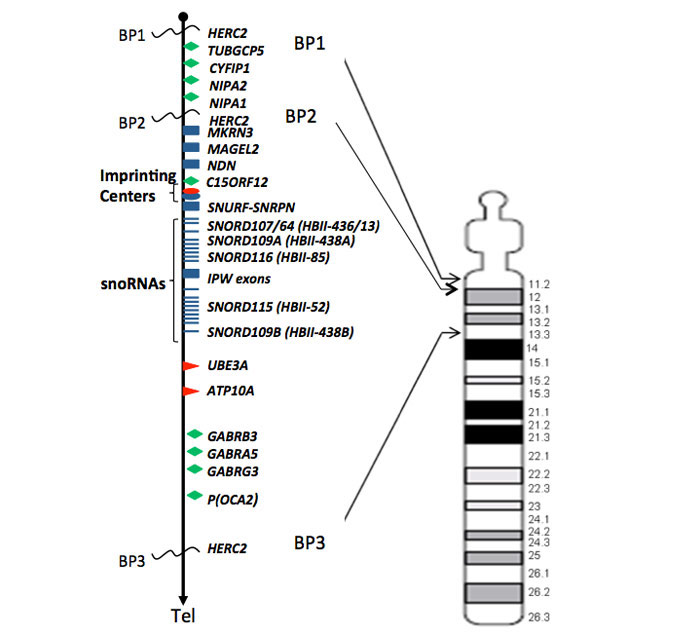
THIS ARTICLE IS MORE THAN FIVE YEARS OLD
This article is more than five years old. Autism research — and science in general — is constantly evolving, so older articles may contain information or theories that have been reevaluated since their original publication date.
Duplication or deletion of four genes within a large chromosomal region linked to Angelman syndrome and autism could lead to developmental disability or language delay, according to a study published in the October issue of Human Genetics1.
Deletion of the 15q11-13 chromosomal region leads to Angelman syndrome, a developmental disorder with features similar to autism, and duplication of the region is associated with autism.
Research into this region generally focuses on one gene, UBE3A. Deletion of UBE3A alone can cause Angelman syndrome, whereas mice with three copies of UBE3A show behaviors similar to those of individuals with autism.
The 15q11-13 region is flanked by three breakpoints, the sites of gene rearrangement, and the size of deletions and duplications can vary between these breakpoints. For example, one rearrangement, between breakpoints one and three, leads to more severe symptoms than a smaller duplication or deletion between breakpoints two and three.
The UBE3A gene is located between breakpoints two and three, whereas the region between breakpoints one and two contains four evolutionarily conserved genes.
In the new study, researchers looked at 17,000 individuals referred for genetic testing and found 69 with a duplication and 77 with a deletion between breakpoints one and two. Clinical information about developmental milestones and diagnoses of neurological disorders is available for 49 of those with the duplication and 56 with the deletion.
Language delay and developmental disability are both associated with the duplication and the deletion, the study found. Of the 56 individuals with the deletion, 33 have developmental disabilities, compared with 19 of 49 of those with the duplication. Among the 49 individuals with the deletion who are old enough to to speak, 44 have language delays compared with 22 of 44 individuals with the duplication.
Of 44 individuals with the duplication who are older than 1 year, 18 have a diagnosis of autism compared with 14 of 49 individuals with the deletion, the study found.
About 20 percent of the study participants also carry other copy number variations, which are duplications or deletions of chromosomal regions. Microduplication or deletion of the four genes within 15q11-13 could contribute to individual features associated with the region, the researchers say.
References:
1: Burnside R.D. et al. Hum. Genet. 130, 517-528 (2011) PubMed
By joining the discussion, you agree to our privacy policy.